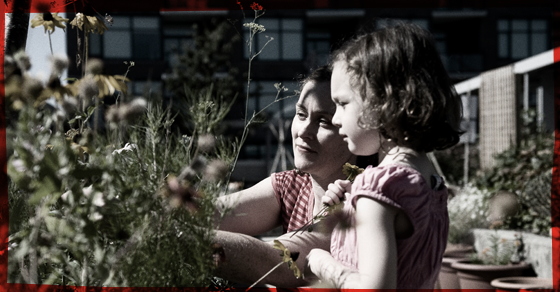What is “lighter living”?

“Lighter living” is about helping our communities to live happier and more well balanced lives, by supporting the development of initiatives in our community that promote sustainable consumption, or what we call “lighter living”.
The planet Earth has a limited amount of resources, and a limited ability to deal with the waste that humans and other living creatures produce. In the communities Vancity serves, we currently live in ways that require about three times our share of the Earth’s resources to support our current consumption of energy, food and ‘stuff,’ and our creation of waste. We also understand that while some people in our communities are consuming more than the planet can sustain, others are unable to meet their basic needs. Reducing overconsumption enables underconsumers to use their power to access their equitable share of resources.
Simply put, ‘lighter living’ is living well and fairly within our ecological means. It is about finding a balance between our levels of material and energy consumption and the Earth’s ability to provide, sustain and regenerate its natural resources to support people, animals and wildlife, and our global ecosystems. Lighter living is also about affordability, justice and social inclusion for those who are seeking to meet their basic needs and aspirations.
So…what do we have to do in order to ‘live lighter’? The good news is, there are lots of things we can do right now to get on the path to lighter living, including:
- Advancing better living - Lighter living is about rethinking our definitions of progress and orienting around long-term wellbeing and thriving, vibrant, healthy individuals, community and ecosystems. We can prioritize the things that matter most to each of us – health, social connection, vitality, trust, security, our capacity to contribute – in ways that move us away from a materialistic culture. For example, reorienting celebrations (birthdays, retirement, holidays) in ways that are not focused on stuff but about creating meaningful experiences, spending time with others, being in service, and offering support for causes we care about.
- Repairing and reusing items that can be used longer (and choosing products that can be used again). For example, sharing and buying good quality and long-lasting repairable products, getting printer cartridges refilled instead of replaced, upgrading computers and cellphones rather than buying the newest version, repairing and mending rather than replacing, or buying vintage, second-hand, and used items that are still in good shape and working condition. It also means choosing well-made products designed to be used more than once.
- Reducing our consumption of high-footprint items. This is about making choices that reduce the amount of products and resources we consume and shifting our cultural, policy and business context to support lighter lives. By moving away from car dependency by working remotely, using public transit or sharing cars, reducing air travel, shifting to plant-rich diets, wasting less food, living in high efficient homes, reducing paper consumption and textiles waste, and minimizing our purchase of disposable and low quality items, our lives become more affordable and allow us to then reinvest in more important things.
- Avoiding buying – or using – products and resources that we don’t need. For many of us, this may be the hardest change to make in the way we consume – to avoid products we don’t need altogether. But with practice and commitment, we can get there together. For those of us with too many things, buying less is the best option of all. Less pollution. Less waste. Less time working to pay for the stuff. More time for ourselves and for the things that matter. More health and thriving economies and societies. We gain a lot by living lighter lives.
There are many low footprint activities that we can be part of in our communities such as health classes, clothing swaps, fix-it repair shops, vegetarian cooking classes, food waste pledges and campaigns, saying no to single-use plastic water bottles/cups, rainwater harvesting, going paperless at work, carpooling with neighbours, spending time outdoors etc. The results will be more sustainable lifestyles, and ways of living that meet our most important needs; a better quality of life; less waste and use of natural resource; and, the preservation of our environment for future generations.